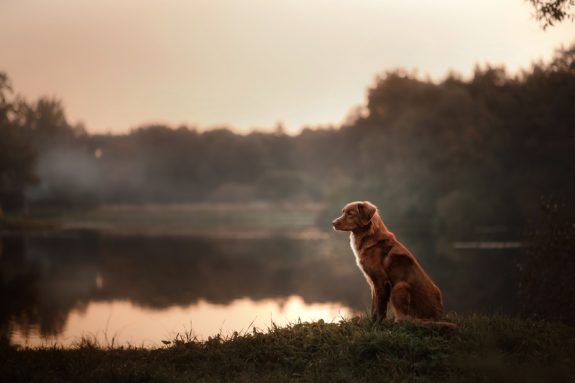
When you look over the back of a dog from above, some of what you’re seeing is the loin. Loins make up the lumbar area and extend from the end of the rib cage to the start of the pelvis forming the upper section of the couplings region. Loins overlie the lumbar vertebrae, and they can differ in length, flexibility and capability according to the length and substance of the bones.
Question: Should the loins be slightly tucked, arched, light, or something else? The answer is that it depends. Proper loins can vary from breed to breed, and certainly from dog to dog. Generally speaking, however, saggy loins aren’t an advantage to any dog. They can give a drooping backline at the coupling, and since the muscles of the loin are connected to those of the hind legs, any weakening of the former lessens a dog’s ability to use his hind leg muscles efficiently. In a working breed, efficiency is the name of the game.
According to its AKC breed standard, slack loins are a fault in the Nova Scotia Duck Tolling Retriever (and a couple of other breeds, as well, but we’ll save them for another day). A Toller’s loins should be strong and muscular (italics from the breed standard), because anything less means diminished power and endurance (our words). You see, loins aren’t supported by any bones other than the seven lumbar vertebrae. They act as a critical link between the dog’s front legs from the ribs forward, and the rear legs, pelvis and tail. Since the back’s most flexible point is just over the loin area, slack, saggy loins also impact a dog’s flexibility.
A companion dog, maybe even a show dog can get away with saggy loins (and not usually), but a working, sporting, or performance dog really can’t. The poor creature would lack stamina, and after years of performance work, his or her old age might be uncomfortable, indeed.
Image: Nova Scotia Duck Tolling Retriever by ©Annaav/Dreamstime.com
